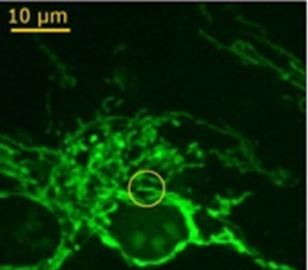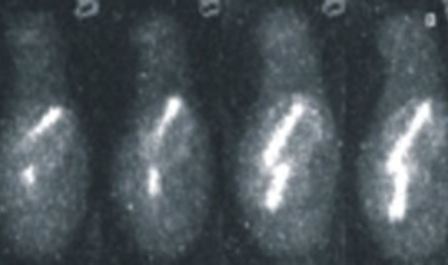Cell Surgeon
Subcellular Laser Dissection with Nanometer Precision

The CellSurgeon is a femto second laser based nanodissection system, designed for gentle and contact-free manipulation of cells and subcellular structures. It enables very precise surgery inside live cells, without causing cell damage.
Contact-free nanodissection of cells and subcellular structures
Gentle manipulation in live cells, without loss of vitality
High precision and reproducibility
CellSurgeon module is adaptable to various microscopes and
imaging procedures
Easy-to-use software for analysis, image processing and
automated procedures
Cost-effective retrofitting of existing imaging systems
Versatile Cell Applications
The CellSurgeon provides a powerful technology platform for precise and gentle nanosurgery in live cells. It is a versatile tool suitable for wide range of applications in biological, medical and pharmaceutical research. The combination of multiphoton imaging techniques with laser nanodissection enables novel experimental approaches to study cellular processes such as metabolism, cell signaling, cell division or apoptosis as well as cell dynamics. Depending on laser pulse energies manipulation levels can vary from stimulation to remodeling or even to complete ablation of cell structures.
Optical Perforation
One distinguished application is the optical perforation* of cell plasma membrane to enable cells to uptake DNA, RNA, or proteins. By focusing the laser beam for a few milliseconds close to the membrane, transient pores are created so that nucleic acids or proteins can enter into the cell. Compared to conventional transfection techniques as the use of viral vectors, chemical carriers or electroporation, optical perforation considerably increases the transfection efficiency, and decreases the risk of cell damage.


ZMTH3 cells, transfected with pEGFP-HMGA2 by optical perforation,
R: fluorescence image, L: brightfield image, with courtesy of Judith Baumgart, LZH Hanover
Nanosurgery
From optical knockout of specific cell organelles to dissection of single cytoskeletal filaments - the CellSurgeon allows very precise and reproducible nanosurgical operations. Dissection and ablation of subcellular structures do not affect surrounding structures


Ablation of a Single Mitochondrium
Chromosome Dissection and Extraction
CellSurgeon equipped with Micromanipulators and a capillary holder
can now be applied for microdissection of single chromosomes [Fig. 2a] and extraction of chromosomal fragments [Fig. 2b].The laser beam of the CellSurgeon can be used to dissect the chromosomes to fragments of less than one micron (approx. 60 Mb of DNA) in thickness and isolate a single fragment for subsequent processing such as sequencing, or cloning and construction of libraries. Since we use near-infrared laser for microdissection, the quality of DNA adjacent to the cutting line is hardly
affected by the long-waved light.

Fig 2a. Dissected Chromosome

Fig 2b. Extraction of Dissected Fragment
Manipulation
The CellSurgeon is not only a nanodissection instrument. Depending on the laser energy it is also possible to use the system for bleaching of labeled cell structures. A further potential application is the optical stimulation of cell organelles.


GFP-labelled mitotic spindles (fission yeast Schizosaccharomyces pombe) L: bleaching,
R: cutting/ ablation, with courtesy of Isabell Raabe, MPI of Cellular Biology & Genetics


